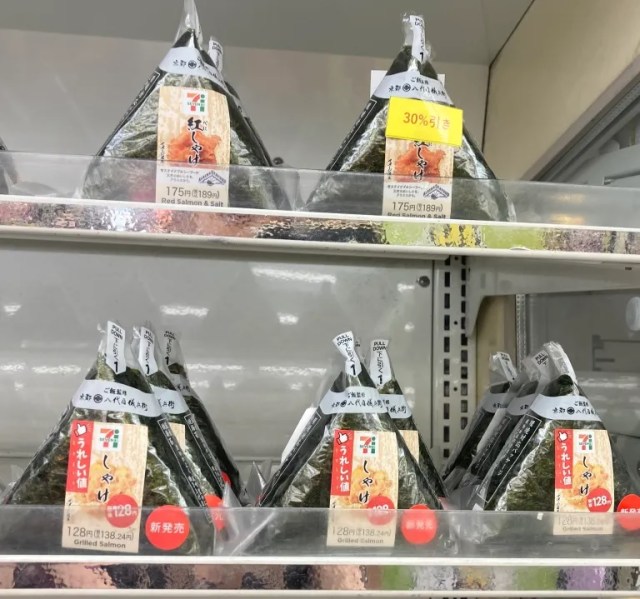
It’s salmon vs. salmon as we taste-test 7-Eleven’s attempt to stem the tide of rampant combini onigiri price inflations.
Onigiri (rice balls) are one of the greatest things about Japanese convenience stores. Healthier than sweets but not as heavy as a boxed lunch or sandwich, onigiri are a great choice when you need to grab a quick, on-the-go snack that’s still nutritious and inexpensive.
Except, that “inexpensive” part is becoming less applicable to convenience store onigiri these days. Just a few years ago, you could get salmon onigiri, one of the most basic and ubiquitous types of rice ball, for around 120 yen (US$0.75), and as little as 100 yen if there was a sale going on. Nowadays, though, even with prices for all sorts of things going up in Japan, onigiri prices are really rising rapidly. 7-Eleven, for example, has raised the price of their standard salmon onigiri, all the way up to 189 yen.
189 yen isn’t so expensive that we absolutely can’t afford them, but it is expensive enough to make us think twice about buying convenience store onigiri, and sometimes that second thought ends up being “Nope, not worth it.” So we were pleasantly surprised, but also a little confused, to find out that 7-Eleven now has two types of salmon onigiri, and the new one is considerably cheaper.
On the left in the above photo is 7-Eleven’s familiar benishake/red salmon onigiri, and on the right is their newly debuted shake/grilled salmon, which is 138 yen after tax, more than 25-percent cheaper.
But does the lesser price come with inferior flavor? Curious to find out, we picked up one of each 7-Eleven salmon onigiri for a taste test, starting with the new, budget-friendly shake/salmon.
Given the cheaper price, our Japanese-language reporter Snufkin, who was handling taste-testing duties, braced for the possibility of dry, flaky fish and hard, crumbly rice. When she took a bite, though, all she experienced was…the joy of eating a tasty salmon rice ball.
The salmon had a great amount of umami and moisture without being too heavy or soggy, and even the rice itself tasted great. Really, she has no complaints about it whatsoever.
Having been fully satisfied by the cheaper onigiri, Snufkin anticipated the more expensive red salmon onigiri would be escorting her taste receptors to an even higher plane of culinary contentedness. Performing the pre-bite visual inspection, she noticed that the red salmon (or sockeye salmon, to use benishake’s other in-English name) really does have a vivid color, and it seems like 7-Eleven gives you just a little more filling quantity here.
So after finding the less-expensive salmon onigiri “Delicious,” what does Snufkin have to say about the more expensive one?
That it’s delicious…just like the cheaper rice ball.
Honestly, Snufkin doesn’t feel like there’s much difference at all between the two. The red salmon isn’t markedly richer or more flavorful than the lower-priced onigiri’s salmon. In other words, she thinks the cheap one is just as good as the expensive one.
Even after tasting the fillings by themselves back-to-back, can’t declare the more expensive one “better.” If she had to draw a differentiating line between them, the cheaper salmon is slightly less fishy-tasting and fishy-smelling than the red salmon.
Of course, individual tastes being what they are, it’s possible that you might find one more appealing to you taste buds than the other. Honestly, though, they’re close enough that Snufkin can’t imagine someone liking one but not the other, so hopefully 7-Eleven has more throwback-priced onigiri in the works.
Photos ©SoranNews24
● Want to hear about SoraNews24’s latest articles as soon as they’re published? Follow us on Facebook and Twitter!
[ Read in Japanese ]

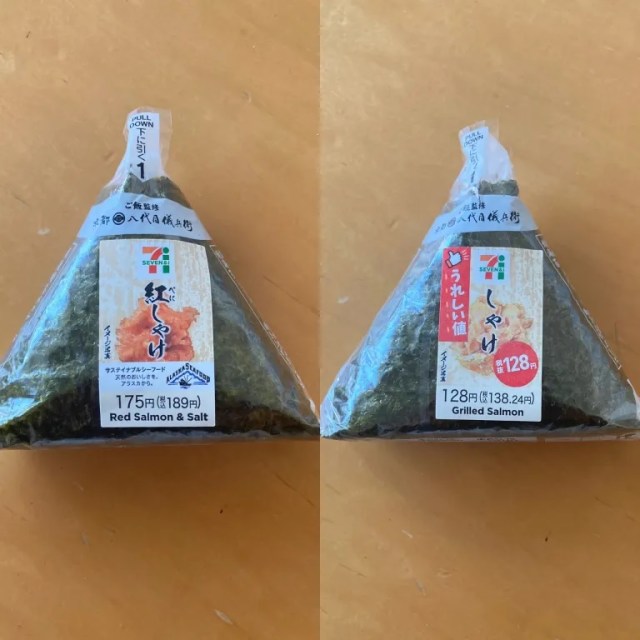
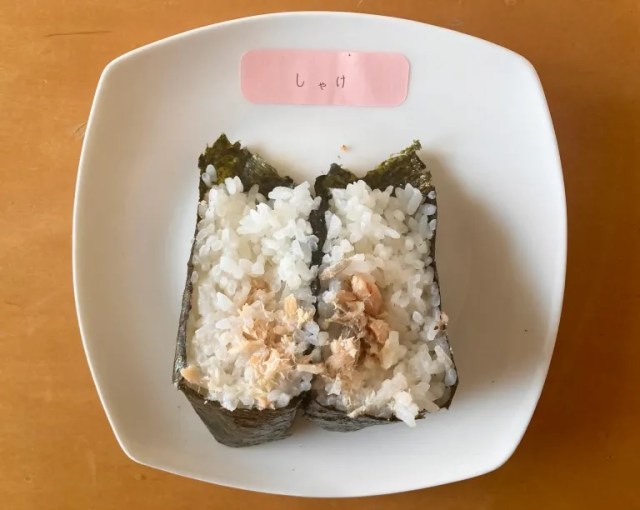
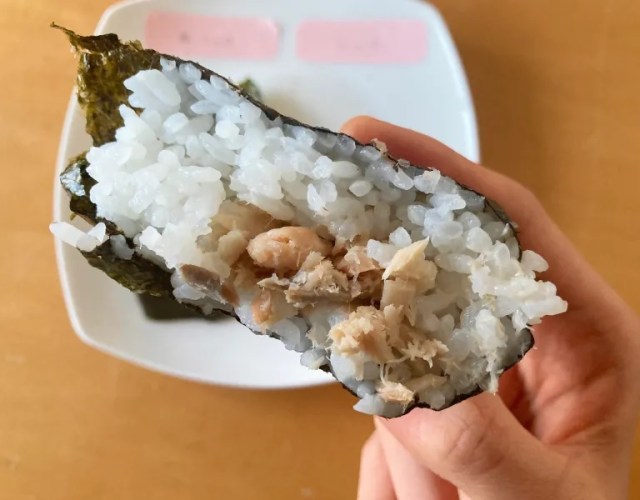
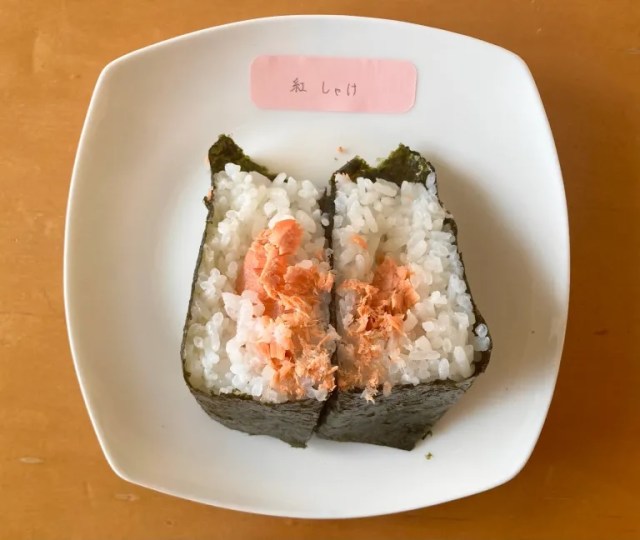
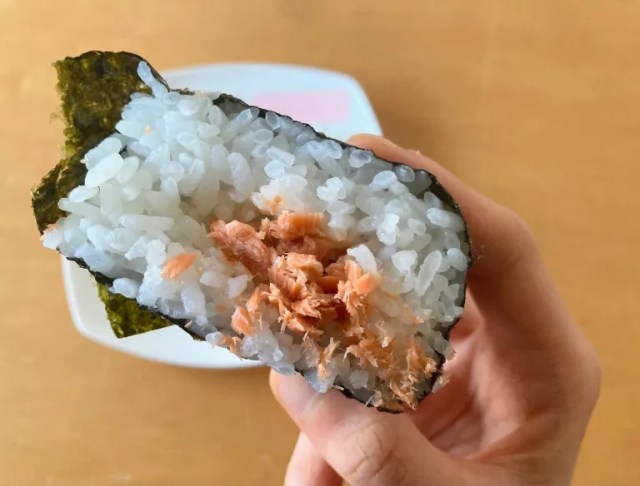
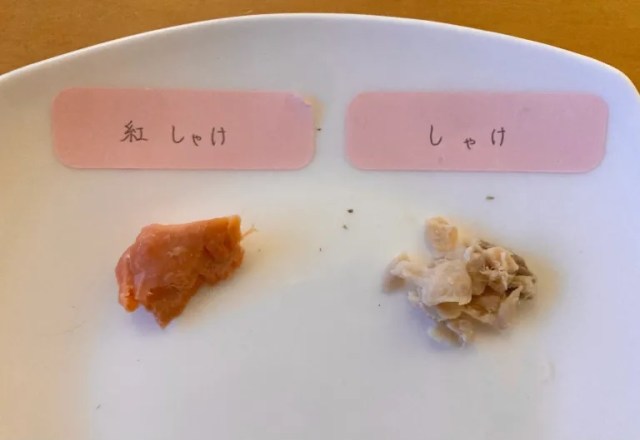
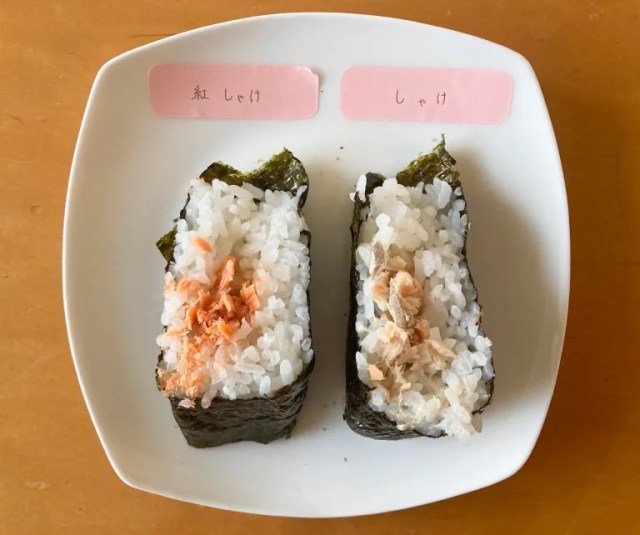
 Should you warm up your convenience store onigiri rice balls in the microwave?【Taste test】
Should you warm up your convenience store onigiri rice balls in the microwave?【Taste test】 Are high-end convenience store rice balls really packed with more ingredients?
Are high-end convenience store rice balls really packed with more ingredients? Japanese convenience store showdown – Who’s got the best ikura rice balls?【Taste test】
Japanese convenience store showdown – Who’s got the best ikura rice balls?【Taste test】 7-Eleven Japan wants to refocus on being affordable, will expand budget-friendly food line
7-Eleven Japan wants to refocus on being affordable, will expand budget-friendly food line Pokémon Poké Ball rice balls are coming to 7-Eleven Japan!
Pokémon Poké Ball rice balls are coming to 7-Eleven Japan! Visiting Japan’s Gyarados Pokémon park in the city with a special connection to Magikarp【Photos】
Visiting Japan’s Gyarados Pokémon park in the city with a special connection to Magikarp【Photos】 Japanese vending machine serves up unique drinks at four Tokyo train stations
Japanese vending machine serves up unique drinks at four Tokyo train stations Bear meat noodles?!? Tokyo restaurant adds a new kind of niku soba to its menu【Taste test】
Bear meat noodles?!? Tokyo restaurant adds a new kind of niku soba to its menu【Taste test】 Majority of Japanese women in survey regret marrying their husband, but that’s only half the story
Majority of Japanese women in survey regret marrying their husband, but that’s only half the story Starbucks Japan releases new drinkware and goods for Valentine’s Day
Starbucks Japan releases new drinkware and goods for Valentine’s Day Pikachu’s chunky original design is back as a plus-sized plushie【Photos】
Pikachu’s chunky original design is back as a plus-sized plushie【Photos】 Massive manga collaboration bringing 100 years of Shueisha manga to Uniqlo T-shirts【Photos】
Massive manga collaboration bringing 100 years of Shueisha manga to Uniqlo T-shirts【Photos】 We try eating nothing but emergency food rations for three progressively tougher days
We try eating nothing but emergency food rations for three progressively tougher days A visit to the back-alley Tokyo ramen restaurant listed in the Michelin dining guide
A visit to the back-alley Tokyo ramen restaurant listed in the Michelin dining guide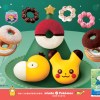 New Psyduck doughnut from Mister Donut’s Pokémon collection takes head-holding to new levels
New Psyduck doughnut from Mister Donut’s Pokémon collection takes head-holding to new levels Starbucks Japan releases new Frappuccino and latte for Valentine’s Day
Starbucks Japan releases new Frappuccino and latte for Valentine’s Day Our 52-year-old pole dancing reporter shares his tips for achieving your New Year’s exercise goal
Our 52-year-old pole dancing reporter shares his tips for achieving your New Year’s exercise goal Totoro cream puffs and Catbus cookies are finally available in downtown Tokyo
Totoro cream puffs and Catbus cookies are finally available in downtown Tokyo Giant hotel rooms in Osaka reflect the new non-niche face of travel in Japan.
Giant hotel rooms in Osaka reflect the new non-niche face of travel in Japan. Japanese women showing rebounding interest in giving Valentine’s Day chocolate【Survey】
Japanese women showing rebounding interest in giving Valentine’s Day chocolate【Survey】 Japan’s kid-friendly ski program is now selling Pikachu snowboards for a limited time only
Japan’s kid-friendly ski program is now selling Pikachu snowboards for a limited time only Ramen restaurant’s English menu prices are nearly double its Japanese ones, denies discriminating
Ramen restaurant’s English menu prices are nearly double its Japanese ones, denies discriminating 10 times to avoid traveling in Japan in 2026
10 times to avoid traveling in Japan in 2026 Starbucks Japan ready to get Year of the Horse started with adorable drinkware and plushies【Pics】
Starbucks Japan ready to get Year of the Horse started with adorable drinkware and plushies【Pics】 7-Eleven Japan starts new temporary luggage storage service in over 300 branches
7-Eleven Japan starts new temporary luggage storage service in over 300 branches Disillusionment at Tsukiji’s tourist-target prices led us to a great ramen restaurant in Tokyo
Disillusionment at Tsukiji’s tourist-target prices led us to a great ramen restaurant in Tokyo Starbucks teams up with 166-year-old Kyoto doll maker for Year of the Horse decorations【Photos】
Starbucks teams up with 166-year-old Kyoto doll maker for Year of the Horse decorations【Photos】 Japan may add Japanese language proficiency, lifestyle classes to permanent foreign resident requirements
Japan may add Japanese language proficiency, lifestyle classes to permanent foreign resident requirements Survey asks foreign tourists what bothered them in Japan, more than half gave same answer
Survey asks foreign tourists what bothered them in Japan, more than half gave same answer Japan’s human washing machines will go on sale to general public, demos to be held in Tokyo
Japan’s human washing machines will go on sale to general public, demos to be held in Tokyo We deeply regret going into this tunnel on our walk in the mountains of Japan
We deeply regret going into this tunnel on our walk in the mountains of Japan Studio Ghibli releases Kodama forest spirits from Princess Mononoke to light up your home
Studio Ghibli releases Kodama forest spirits from Princess Mononoke to light up your home Major Japanese hotel chain says reservations via overseas booking sites may not be valid
Major Japanese hotel chain says reservations via overseas booking sites may not be valid Put sesame oil in your coffee? Japanese maker says it’s the best way to start your day【Taste test】
Put sesame oil in your coffee? Japanese maker says it’s the best way to start your day【Taste test】 No more using real katana for tourism activities, Japan’s National Police Agency says
No more using real katana for tourism activities, Japan’s National Police Agency says Starbucks Japan reveals new sakura drinkware collection, inspired by evening cherry blossoms
Starbucks Japan reveals new sakura drinkware collection, inspired by evening cherry blossoms Updated cherry blossom forecast shows extra-long sakura season for Japan this year
Updated cherry blossom forecast shows extra-long sakura season for Japan this year 7-Eleven’s new Ebiten tempura shrimp rice ball is premium in both taste AND cost
7-Eleven’s new Ebiten tempura shrimp rice ball is premium in both taste AND cost Japanese convenience store showdown: Who’s got the best red rice sekihan rice balls?【Taste test】
Japanese convenience store showdown: Who’s got the best red rice sekihan rice balls?【Taste test】 Pokémon Poké Ball rice balls now on sale in Japan, don’t taste like jelly donuts【Taste test】
Pokémon Poké Ball rice balls now on sale in Japan, don’t taste like jelly donuts【Taste test】 The difference between onigiri rice balls in Tokyo and Osaka
The difference between onigiri rice balls in Tokyo and Osaka Which Japanese convenience store has the best plain onigiri rice balls?
Which Japanese convenience store has the best plain onigiri rice balls? 7-Eleven Japan to double the shelf life of their onigiri rice balls
7-Eleven Japan to double the shelf life of their onigiri rice balls Who makes Japan’s best Spam-style onigiri convenience store rice ball? Let’s find out【Taste test】
Who makes Japan’s best Spam-style onigiri convenience store rice ball? Let’s find out【Taste test】 Which Japanese convenience store has the best salted onigiri rice balls?
Which Japanese convenience store has the best salted onigiri rice balls? Survey ranks convenience store rice balls – salmon, sea-dwelling poultry & plants steal the show
Survey ranks convenience store rice balls – salmon, sea-dwelling poultry & plants steal the show In celebration of Onigiri Day, we compare rice balls from three different convenience stores
In celebration of Onigiri Day, we compare rice balls from three different convenience stores Japanese convenience store’s newest rice ball filling: Nothing at all, and why we’re OK with that
Japanese convenience store’s newest rice ball filling: Nothing at all, and why we’re OK with that 7-Eleven under fire in Japan for mysterious holes in their onigiri rice balls
7-Eleven under fire in Japan for mysterious holes in their onigiri rice balls Imitation fish sperm appears at 7-Eleven Japan【Taste test】
Imitation fish sperm appears at 7-Eleven Japan【Taste test】 Say hello to the Big Bomb Onigiri, a beast of a Japanese rice ball
Say hello to the Big Bomb Onigiri, a beast of a Japanese rice ball Three great mint chocolate sweets to buy at 7-Eleven while the summer heat gives us an excuse
Three great mint chocolate sweets to buy at 7-Eleven while the summer heat gives us an excuse
Leave a Reply